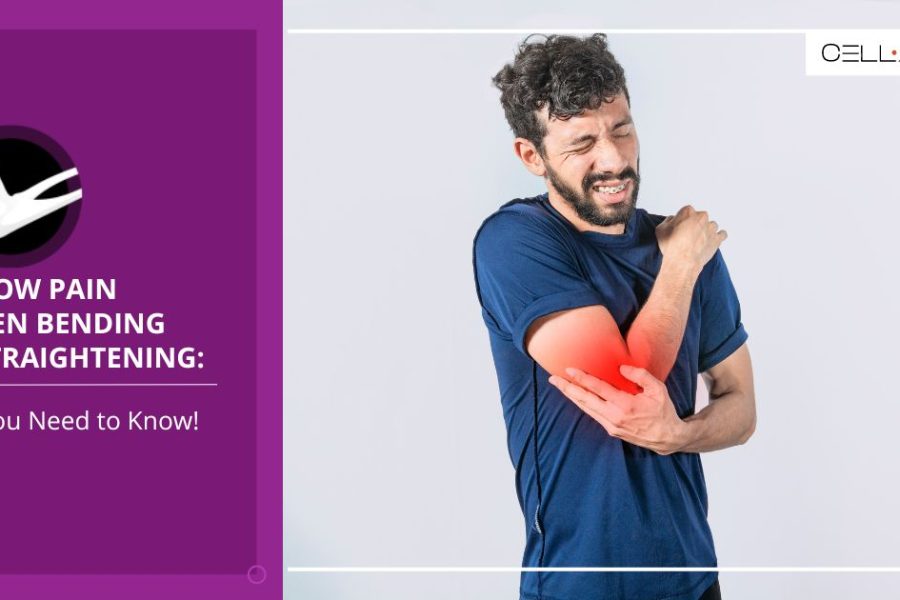Published on: November 20, 2024 | Updated on: January 18, 2025
Have you been feeling pain in your lower back, legs, arms, and shoulder? Does your body feel weaker than usual when you take a walk? Any problem with the spine presents these complications, but the most common is stenosis.
What is stenosis of the spine, and how does it cause lower back pain? The spine is made up of 33 bony structures called vertebrae. These structures forming the spinal region help us stay upright, maintain posture, and allow movement.
Spongy intervertebral discs separate each vertebra and provide a cushioning effect to reduce friction. With age, these spongy discs lose their elasticity and shrink.
The ligaments also swell up, narrowing the spinal tunnel. Less space within the spinal tunnel puts pressure on the nerves that become irritated, pinched, or compressed and cause pain. Let’s find out more about the stenosis of the spine and how it affects the body.
Types of Spinal Stenosis
There are two types of spinal stenosis depending on the location.
Cervical Spinal Stenosis
What is stenosis of the spine? In the case of cervical spinal stenosis, our neck is affected because the cervical spine refers to the spine in the nape of the neck.
Our neck region has seven cervical vertebrae. The narrowing of the spinal passage in the cervical region is called cervical spinal stenosis.
The spinal column becomes too small for the nerve roots and spinal cord, causing nerve compression, pain, and weakness. This affects the shoulders, arms, hands, and legs in particular. Cervical spinal stenosis puts you at a higher risk for spinal cord compression.
Lumbar Spinal Stenosis
The lower back is called the lumbar region, and it has five vertebrae. The stenosis of the lumbar region is more common than cervical stenosis.
Symptoms include tingling, pain, and numbness in the lower back, legs, and hips. The symptoms may worsen when you walk or move. Increased physical activity also causes leg pain and balance issues.
How Common Is Spinal Stenosis?
Stenosis of the spine is fairly common as this degenerative condition affects 1/1000 people over the age of 65 and 5/1000 people over the age of 50.
According to some studies, some form of degenerative spinal change impacts 95% of people by the age of 50. Amongst these, spinal stenosis is common.
What Are the Causes of Spinal Stenosis?
Spinal stenosis mostly affects people as they age. Our body produces less collagen and elastin, the two integral proteins that impart elasticity to the body.
The reduced elasticity makes the spinal disk dry, which causes it to start to rupture. This also affects the health of bones and ligaments, which become thicker.
Medical conditions such as arthritis also cause long-term swelling of the spinal structures, narrowing the spinal column. A narrowed spinal tunnel puts pressure on the nerves.
Compressed nerves cause weakness, sciatica, and lower back pain that radiates to the legs, arms, shoulders, and back. Besides age-related spinal degeneration, here are some other causes of spinal stenosis.
Osteoarthritis
The cartilage cushioning the joints of the spine wears down. Bone spurs form, which encroach the spinal tunnel and compress the nerves.
Herniated Discs
The intervertebral discs degenerate over time or protrude. They press on the nerves in the spinal column and narrow the tunnel. This causes stenosis of the spine.
The intense pain in herniated discs and spinal stenosis is from nerve compression due to protruding intervertebral discs.
Thickened Ligaments
Spinal ligaments become thick and stiffen over time. Mostly, aging and degenerative processes affect the ligaments due to wear and tear. The repetitive strain on the ligaments also makes them lose flexibility and elasticity.
The body’s natural healing process repairs the ligaments by depositing extra tissue to strengthen the ligaments. This makes the ligaments thick, which narrows the spinal canal.
The narrowing of the spinal tunnel compresses the nerves that send pain signals, affecting the lower back, legs, arms, and shoulder.
Tumors and Infections
Although less common, certain types of tumors and infections can cause stenosis of the spine. The healing process of the body deposits extra tissue, which narrows the spinal tunnel.
Symptoms of Spinal Stenosis
What is stenosis of the spine, and what are the complications? Looking into the symptoms can help you better understand the condition, severity, and possible complications.
- Chronic back pain
- Radiating pain in the arms, legs, and shoulders
- Numbness and tingling in the lower back and legs
- Muscle fatigue
- Weakness of the muscles
- Balance issues
- Coordination problems
- Poor bladder control
- Bowel dysfunction
- Difficulty walking
- Difficulty sitting up straight
How to Diagnose Stenosis of the Spine?
Medical imaging such as X-rays, MRI, and CT scans are the choice of methods for diagnosing spinal stenosis. The radiographs from X-rays display bone spurs or disc degeneration, which are the indications of spinal stenosis.
Magnetic resonance imaging (MRI) is the most appropriate choice of diagnosis as it shows all the details of soft tissues. MRI helps observe the spinal cord, associated vertebrae, ligaments, and nerves.
Besides this, a computer tomography (CT) scan is also used for diagnosis as it shows the spinal cord and associated nerves.
How to Treat Spinal Stenosis?
Spinal stenosis presents a combination of symptoms. The severity of the symptoms determines the line of treatment. For example, if the spine tunnel is narrowed due to inflammation from arthritis, treatment involves medicines for arthritis.
Physical therapy, medicines such as muscle relaxants, and steroid injections are used for conservative therapy.
Medicines for spinal stenosis are NSAIDs and muscle relaxants. These anti-inflammatory medicines relieve pain from nerve compression. They also reduce inflammation of the ligaments and surrounding structures that narrow the spinal tunnel.
Doctors recommend gentle exercises such as yoga and stretching to improve strength and mobility. This reduces the pressure on the spinal nerves, relieving pain.
Surgical treatments are laminectomy and spinal fusion. Laminectomy removes the parts of vertebrae that protrude and compress the spine or removes an entire vertebra to create more space in the spinal tunnel.
Spinal fusion is a surgery where two or more vertebrae are joined to prevent their movement, which pinches the nerves.
Wrap Up
Understanding what is stenosis of the spine requires you to become familiar with the spinal canal, its structures, and degenerative changes that occur with age or medical conditions.
Spinal stenosis causes intense pain, impacting the quality of life. It’s essential to understand the treatment options to manage the extreme symptoms and pain.
Many effective treatments reduce inflammation and pain without the need for surgery. Therefore, it’s best to consult a healthcare provider to know all your treatment options before opting for surgery.
Sources
Footnotes
- Begrich D, Jäger M. Cervical stenosis – Diagnostics and treatment of symptomatic spinal canal stenosis and neural foraminal stenosis. Orthopade. 2024 Aug;53(8):617-628.
- Alvarez JA, Hardy RH Jr. Lumbar spine stenosis: a common cause of back and leg pain. Am Fam Physician. 1998 Apr 15;57(8):1825-34, 1839-40.
- Melancia JL, Francisco AF, Antunes JL. Spinal stenosis. Handb Clin Neurol. 2014;119:541-9. doi: 10.1016/B978-0-7020-4086-3.00035-7.
- Näther P, Kersten JF, Kaden I, Irga K, Nienhaus A. Distribution patterns of degeneration of the lumbar spine in a cohort of 200 patients with an indication for lumbar MRI. Int J Environ Res Public Health. 2022 Mar;19(6):3721.
- Varani J, Dame MK, Rittie L, Fligiel SEG, Kang S, Fisher GJ, Voorhees JJ. Decreased collagen production in chronologically aged skin: roles of age-dependent alteration in fibroblast function and defective mechanical stimulation. Am J Pathol. 2006 Jun;168(6):1861-8.
- Papadakis M, Sapkas G, Papadopoulos EC, Katonis P. Pathophysiology and biomechanics of the aging spine. Open Orthop J. 2011;5:335-42.
- Yang G, Rothrauff BB, Tuan RS. Tendon and ligament regeneration and repair: clinical relevance and developmental paradigm. Birth Defects Res C Embryo Today. 2013 Sep;99(3):203-22.
- Jasiewicz B, Helenius I. Tumors and infections of the growing spine. J Child Orthop. 2023 Dec;17(6):556-72.
- Hartman J, Granville M, Jacobson RE. Radiologic evaluation of lumbar spinal stenosis: the integration of sagittal and axial views in decision making for minimally invasive surgical procedures. Cureus. 2019 Mar;11(3)
References
- What Is Degenerative Disk Disease? WebMD. Accessed 09/12/2024.
- Spinal Stenosis. National Institute of Arthritis and Musculoskeletal and Skin Diseases (NIAMS). Accessed 09/12/2024.
- Disc Desiccation. Healthline. Accessed 09/12/2024.
- Spinal Arthritis. Johns Hopkins Medicine. Accessed 09/12/2024.
- Sciatica: Symptoms and Causes. Mayo Clinic. Accessed 09/12/2024.
- Bone Spurs. The Advanced Spine Center. Accessed 09/12/2024.
- Magnetic Resonance Imaging (MRI). Johns Hopkins Medicine. Accessed 09/12/2024.
- CT (Computed Tomography) Scan. Cleveland Clinic. Accessed 09/12/2024.
- Spinal Stenosis Treatment. WebMD. Accessed 09/12/2024.
- Laminectomy: Procedure Overview. Johns Hopkins Medicine. Accessed 09/12/2024.
- Spinal Fusion: Procedure Overview. Cleveland Clinic. Accessed 09/12/2024.
CELLAXYS does not offer Stem Cell Therapy as a cure for any medical condition. No statements or treatments presented by Cellaxys have been evaluated or approved by the Food and Drug Administration (FDA). This site contains no medical advice. All statements and opinions are provided for educational and informational purposes only.
Dr Pejman Bady
Author
Dr. Pejman Bady began his career over 20 years ago in Family/Emergency Medicine, working in fast-paced emergency departments in Nevada and Kansas. He has served the people of Las Vegas as a physician for over two decades. Throughout this time, he has been met with much acclaim and is now the head of Emergency Medical Services in Nye County, Nevada. More about the doctor on this page.
Dr Pouya Mohajer
Contributor
Pouya Mohajer, M.D. is the Director of Spine and Interventional Medicine for CELLAXYS: Age, Regenerative, and Interventional Medicine Centers. He has over 20 years of experience in pain management, perioperative medicine, and anesthesiology. Dr. Mohajer founded and is the Medical Director of Southern Nevada Pain Specialists and PRIMMED Clinics. He has dedicated his career to surgical innovation and scientific advancement. More about the doctor on this page.







